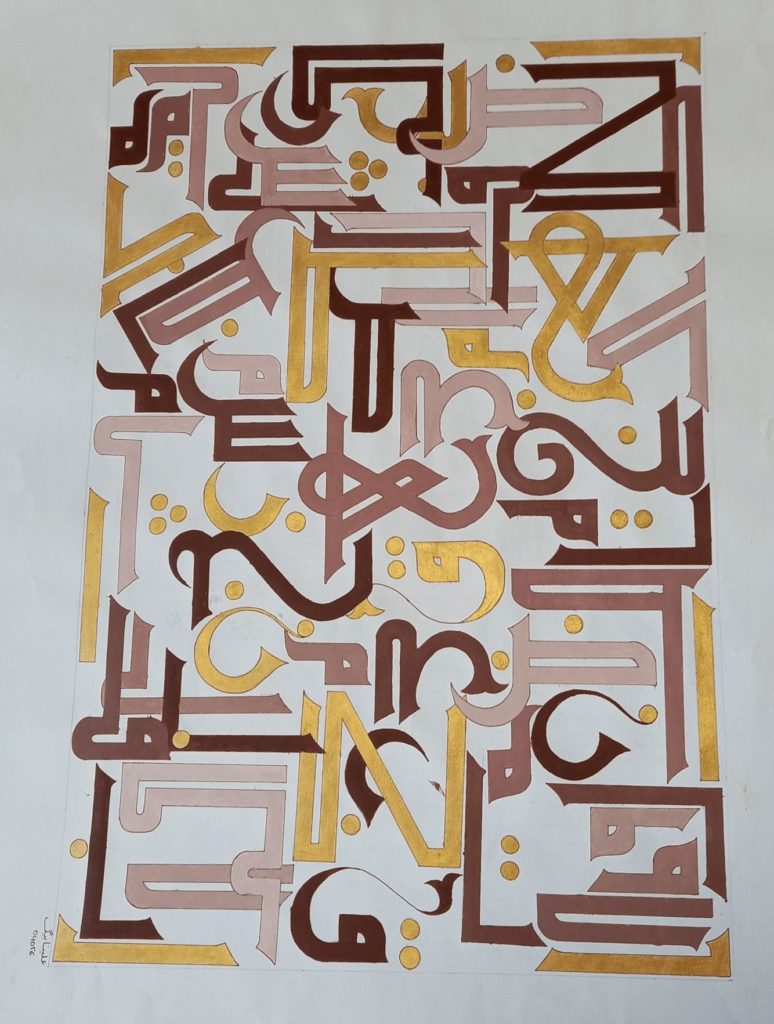By Noman Baig
To propose and teach a practice-based course in a highly academic setting is a formidable task. Practitioners usually face resistance from theoretically minded academics who perceive hands-on training as a lowbrow vocation. Last year in 2020, after practicing Islamic calligraphy for a year under a disciple of Kashif Khan (b. 1978), I decided to teach an undergraduate course on the subject at the newly established liberal arts college Habib University in Karachi, Pakistan. My home department, Social Development & Policy, rejected my proposal on the pretext that traditional art has no place in developmental studies; that it does not address pressing challenges in the way the discipline of economics does.
After initial resistance, the newly launched Comparative Humanities program[1] agreed to host the course as a creative practice requirement. Designed as an experimental course, Divine Proportions: Introduction to Islamic Calligraphy fused drawing and thinking into a singular aesthetic experience of the Islamic arts. The challenge was teaching aesthetic theory in tandem with drawing. The gap was overcome when I took the lead in teaching the historical-mythical aspects of the art. The calligrapher Ustad Kashif Khan took the responsibility of teaching calligraphy. In the first half, students discussed the readings and delivered presentations. In the second half, Ustad Kashif Khan taught them the art of drawing letters.
Continue reading “The Pen’s Screech: Muslim Spiritual Practice of Arabic Calligraphy”
